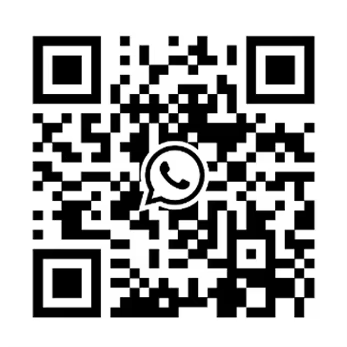Understanding the Basics of Electronic Piano Circuits
What is an Electronic Piano Circuit?
An electronic piano circuit is a complex network of electronic components, including resistors, capacitors, transistors, and integrated circuits (ICs), designed to generate musical notes when keys are pressed. Unlike traditional pianos that produce sound through mechanical vibrations, electronic pianos use these circuits to produce digital signals, which are then amplified and converted into sound through speakers.
Key Components of an Electronic Piano Circuit
- Power Supply: Provides the necessary voltage and current to the circuit.
- Oscillators: Generate sound waves at specific frequencies.
- Amplifiers: Increase the amplitude of the signal.
- Filters: Shape the sound by allowing certain frequencies to pass and blocking others.
- Keys and Switches: Interface for the user to control the circuit.
- Speakers: Output the final sound.
Designing an Electronic Piano Circuit
Step-by-Step Design Process
1. Circuit Diagram Creation
The first step in designing an electronic piano circuit is to create a circuit diagram. This schematic representation includes all the components and their interconnections. Software like Eagle or KiCad can be used for this purpose.
2. Selection of Components
Choosing the right components is crucial for the circuit’s performance. Key considerations include:
- Oscillators: Quartz crystal oscillators are preferred for their stability.
- Amplifiers: Operational amplifiers (Op-Amps) like the LM386 are popular choices.
- Capacitors and Resistors: Select values based on the desired frequency and signal strength.
3. Breadboarding
Before finalizing the design, it’s wise to prototype the circuit on a breadboard. This allows for testing and troubleshooting without soldering.
4. PCB Design
Once the breadboard prototype is successful, the next step is designing a Printed Circuit Board (PCB). PCB design software can help in laying out the circuit efficiently.
Constructing the Electronic Piano Circuit
1. Assembling the Components
Start by placing the components on the PCB according to the layout designed. Ensure proper orientation of components like diodes and capacitors.
2. Soldering
Carefully solder each component onto the PCB. Make sure to avoid any solder bridges that could short-circuit the board.
3. Testing
After soldering, test the circuit for continuity and proper voltage levels. Use an oscilloscope to verify the output signals from the oscillators.
4. Enclosure
Place the assembled PCB into an appropriate enclosure. Ensure the keys are properly aligned and responsive.
How Electronic Piano Circuits Work
Signal Generation
When a key is pressed, it closes a switch that triggers an oscillator. This oscillator generates a specific frequency corresponding to the musical note.
Signal Amplification
The signal from the oscillator is typically weak and needs amplification. This is where the operational amplifier comes in, boosting the signal to a level suitable for driving a speaker.
Sound Shaping
Filters are used to shape the sound by controlling the harmonic content of the signal. This step is crucial for creating the desired timbre of the piano sound.
Output
Finally, the shaped and amplified signal is sent to the speakers, converting the electrical signals into audible sound.
Advanced Features in Modern Electronic Piano Circuits
Digital Signal Processing (DSP)
Many modern electronic pianos incorporate Digital Signal Processing (DSP) to enhance sound quality. DSP algorithms can simulate various piano sounds and add effects like reverb and chorus.
MIDI Integration
MIDI (Musical Instrument Digital Interface) allows electronic pianos to interface with computers and other digital instruments, enabling recording, editing, and playback of music.
Polyphony
Polyphony refers to the ability of an electronic piano to play multiple notes simultaneously. Advanced circuits can support high levels of polyphony, providing a richer and more complex sound.
Touch Sensitivity
Modern circuits often include touch sensitivity, where the velocity of key presses affects the volume and timbre of the notes, mimicking the expressive capabilities of acoustic pianos.
Building Your Own Electronic Piano Circuit: A Practical Guide
Required Tools and Materials
- Breadboard and wires
- Oscillators (e.g., 555 Timer ICs)
- Operational Amplifiers (e.g., LM386)
- Resistors and capacitors
- Soldering iron and solder
- PCB and enclosure
- Keys and switches
- Speakers
Step-by-Step Construction
1. Planning and Schematic Design
Begin by planning your circuit. Draw a schematic diagram showing how each component connects.
2. Prototyping on Breadboard
Assemble the circuit on a breadboard. Test each section (oscillators, amplifiers, filters) independently to ensure they work correctly.
3. PCB Layout and Assembly
Transfer the design to a PCB. Use PCB layout software to design the board, then etch and drill the PCB. Solder the components onto the PCB following the layout.
4. Final Assembly and Testing
Mount the PCB into the enclosure. Connect the keys and speakers. Power up the circuit and test it thoroughly, making adjustments as necessary.
Troubleshooting Common Issues
No Sound Output
- Check power supply: Ensure the circuit is receiving the correct voltage.
- Inspect connections: Look for loose or incorrect connections.
- Verify components: Ensure all components are functioning and properly oriented.
Distorted Sound
- Examine oscillators: Check for stable frequency generation.
- Review amplifiers: Ensure amplifiers are not overloading or clipping the signal.
- Adjust filters: Tweak filter components to achieve the desired sound quality.
Understanding the Basics of Electronic Piano Circuits
What is an Electronic Piano Circuit?
An electronic piano circuit is a complex network of electronic components, including resistors, capacitors, transistors, and integrated circuits (ICs), designed to generate musical notes when keys are pressed. Unlike traditional pianos that produce sound through mechanical vibrations, electronic pianos use these circuits to produce digital signals, which are then amplified and converted into sound through speakers.
Key Components of an Electronic Piano Circuit
- Power Supply: Provides the necessary voltage and current to the circuit.
- Oscillators: Generate sound waves at specific frequencies.
- Amplifiers: Increase the amplitude of the signal.
- Filters: Shape the sound by allowing certain frequencies to pass and blocking others.
- Keys and Switches: Interface for the user to control the circuit.
- Speakers: Output the final sound.
Designing an Electronic Piano Circuit
Step-by-Step Design Process
1. Circuit Diagram Creation
The first step in designing an electronic piano circuit is to create a circuit diagram. This schematic representation includes all the components and their interconnections. Software like Eagle or KiCad can be used for this purpose.
2. Selection of Components
Choosing the right components is crucial for the circuit’s performance. Key considerations include:
- Oscillators: Quartz crystal oscillators are preferred for their stability.
- Amplifiers: Operational amplifiers (Op-Amps) like the LM386 are popular choices.
- Capacitors and Resistors: Select values based on the desired frequency and signal strength.
3. Breadboarding
Before finalizing the design, it’s wise to prototype the circuit on a breadboard. This allows for testing and troubleshooting without soldering.
4. PCB Design
Once the breadboard prototype is successful, the next step is designing a Printed Circuit Board (PCB). PCB design software can help in laying out the circuit efficiently.
Constructing the Electronic Piano Circuit
1. Assembling the Components
Start by placing the components on the PCB according to the layout designed. Ensure proper orientation of components like diodes and capacitors.
2. Soldering
Carefully solder each component onto the PCB. Make sure to avoid any solder bridges that could short-circuit the board.
3. Testing
After soldering, test the circuit for continuity and proper voltage levels. Use an oscilloscope to verify the output signals from the oscillators.
4. Enclosure
Place the assembled PCB into an appropriate enclosure. Ensure the keys are properly aligned and responsive.
How Electronic Piano Circuits Work
Signal Generation
When a key is pressed, it closes a switch that triggers an oscillator. This oscillator generates a specific frequency corresponding to the musical note.
Signal Amplification
The signal from the oscillator is typically weak and needs amplification. This is where the operational amplifier comes in, boosting the signal to a level suitable for driving a speaker.
Sound Shaping
Filters are used to shape the sound by controlling the harmonic content of the signal. This step is crucial for creating the desired timbre of the piano sound.
Output
Finally, the shaped and amplified signal is sent to the speakers, converting the electrical signals into audible sound.
Advanced Features in Modern Electronic Piano Circuits
Digital Signal Processing (DSP)
Many modern electronic pianos incorporate Digital Signal Processing (DSP) to enhance sound quality. DSP algorithms can simulate various piano sounds and add effects like reverb and chorus.
MIDI Integration
MIDI (Musical Instrument Digital Interface) allows electronic pianos to interface with computers and other digital instruments, enabling recording, editing, and playback of music.
Polyphony
Polyphony refers to the ability of an electronic piano to play multiple notes simultaneously. Advanced circuits can support high levels of polyphony, providing a richer and more complex sound.
Touch Sensitivity
Modern circuits often include touch sensitivity, where the velocity of key presses affects the volume and timbre of the notes, mimicking the expressive capabilities of acoustic pianos.
Building Your Own Electronic Piano Circuit: A Practical Guide
Required Tools and Materials
- Breadboard and wires
- Oscillators (e.g., 555 Timer ICs)
- Operational Amplifiers (e.g., LM386)
- Resistors and capacitors
- Soldering iron and solder
- PCB and enclosure
- Keys and switches
- Speakers
Step-by-Step Construction
1. Planning and Schematic Design
Begin by planning your circuit. Draw a schematic diagram showing how each component connects.
2. Prototyping on Breadboard
Assemble the circuit on a breadboard. Test each section (oscillators, amplifiers, filters) independently to ensure they work correctly.
3. PCB Layout and Assembly
Transfer the design to a PCB. Use PCB layout software to design the board, then etch and drill the PCB. Solder the components onto the PCB following the layout.
4. Final Assembly and Testing
Mount the PCB into the enclosure. Connect the keys and speakers. Power up the circuit and test it thoroughly, making adjustments as necessary.
Troubleshooting Common Issues
No Sound Output
- Check power supply: Ensure the circuit is receiving the correct voltage.
- Inspect connections: Look for loose or incorrect connections.
- Verify components: Ensure all components are functioning and properly oriented.
Distorted Sound
- Examine oscillators: Check for stable frequency generation.
- Review amplifiers: Ensure amplifiers are not overloading or clipping the signal.
- Adjust filters: Tweak filter components to achieve the desired sound quality.
Understanding the Basics of Electronic Piano Circuits
What is an Electronic Piano Circuit?
An electronic piano circuit is a complex network of electronic components, including resistors, capacitors, transistors, and integrated circuits (ICs), designed to generate musical notes when keys are pressed. Unlike traditional pianos that produce sound through mechanical vibrations, electronic pianos use these circuits to produce digital signals, which are then amplified and converted into sound through speakers.
Key Components of an Electronic Piano Circuit
- Power Supply: Provides the necessary voltage and current to the circuit.
- Oscillators: Generate sound waves at specific frequencies.
- Amplifiers: Increase the amplitude of the signal.
- Filters: Shape the sound by allowing certain frequencies to pass and blocking others.
- Keys and Switches: Interface for the user to control the circuit.
- Speakers: Output the final sound.
Designing an Electronic Piano Circuit
Step-by-Step Design Process
1. Circuit Diagram Creation
The first step in designing an electronic piano circuit is to create a circuit diagram. This schematic representation includes all the components and their interconnections. Software like Eagle or KiCad can be used for this purpose.
2. Selection of Components
Choosing the right components is crucial for the circuit’s performance. Key considerations include:
- Oscillators: Quartz crystal oscillators are preferred for their stability.
- Amplifiers: Operational amplifiers (Op-Amps) like the LM386 are popular choices.
- Capacitors and Resistors: Select values based on the desired frequency and signal strength.
3. Breadboarding
Before finalizing the design, it’s wise to prototype the circuit on a breadboard. This allows for testing and troubleshooting without soldering.
4. PCB Design
Once the breadboard prototype is successful, the next step is designing a Printed Circuit Board (PCB). PCB design software can help in laying out the circuit efficiently.
Constructing the Electronic Piano Circuit
1. Assembling the Components
Start by placing the components on the PCB according to the layout designed. Ensure proper orientation of components like diodes and capacitors.
2. Soldering
Carefully solder each component onto the PCB. Make sure to avoid any solder bridges that could short-circuit the board.
3. Testing
After soldering, test the circuit for continuity and proper voltage levels. Use an oscilloscope to verify the output signals from the oscillators.
4. Enclosure
Place the assembled PCB into an appropriate enclosure. Ensure the keys are properly aligned and responsive.
How Electronic Piano Circuits Work
Signal Generation
When a key is pressed, it closes a switch that triggers an oscillator. This oscillator generates a specific frequency corresponding to the musical note.
Signal Amplification
The signal from the oscillator is typically weak and needs amplification. This is where the operational amplifier comes in, boosting the signal to a level suitable for driving a speaker.
Sound Shaping
Filters are used to shape the sound by controlling the harmonic content of the signal. This step is crucial for creating the desired timbre of the piano sound.
Output
Finally, the shaped and amplified signal is sent to the speakers, converting the electrical signals into audible sound.
Advanced Features in Modern Electronic Piano Circuits
Digital Signal Processing (DSP)
Many modern electronic pianos incorporate Digital Signal Processing (DSP) to enhance sound quality. DSP algorithms can simulate various piano sounds and add effects like reverb and chorus.
MIDI Integration
MIDI (Musical Instrument Digital Interface) allows electronic pianos to interface with computers and other digital instruments, enabling recording, editing, and playback of music.
Polyphony
Polyphony refers to the ability of an electronic piano to play multiple notes simultaneously. Advanced circuits can support high levels of polyphony, providing a richer and more complex sound.
Touch Sensitivity
Modern circuits often include touch sensitivity, where the velocity of key presses affects the volume and timbre of the notes, mimicking the expressive capabilities of acoustic pianos.
Building Your Own Electronic Piano Circuit: A Practical Guide
Required Tools and Materials
- Breadboard and wires
- Oscillators (e.g., 555 Timer ICs)
- Operational Amplifiers (e.g., LM386)
- Resistors and capacitors
- Soldering iron and solder
- PCB and enclosure
- Keys and switches
- Speakers
Step-by-Step Construction
1. Planning and Schematic Design
Begin by planning your circuit. Draw a schematic diagram showing how each component connects.
2. Prototyping on Breadboard
Assemble the circuit on a breadboard. Test each section (oscillators, amplifiers, filters) independently to ensure they work correctly.
3. PCB Layout and Assembly
Transfer the design to a PCB. Use PCB layout software to design the board, then etch and drill the PCB. Solder the components onto the PCB following the layout.
4. Final Assembly and Testing
Mount the PCB into the enclosure. Connect the keys and speakers. Power up the circuit and test it thoroughly, making adjustments as necessary.
Troubleshooting Common Issues
No Sound Output
- Check power supply: Ensure the circuit is receiving the correct voltage.
- Inspect connections: Look for loose or incorrect connections.
- Verify components: Ensure all components are functioning and properly oriented.
Distorted Sound
- Examine oscillators: Check for stable frequency generation.
- Review amplifiers: Ensure amplifiers are not overloading or clipping the signal.
- Adjust filters: Tweak filter components to achieve the desired sound quality.
Our company is a comprehensive enterprise ingratiating research and development, design, production, sales and service. We produce several kinds of electronic piano for all over the world.
If you want to know more details, add my
whatsapp: +86 17706062278. Gmail: anngood88day@gmail.com





